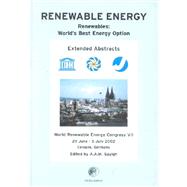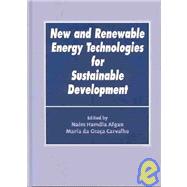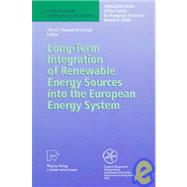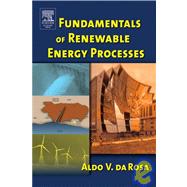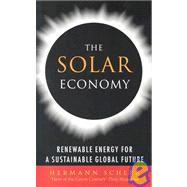| Methanol train From: dutchtrainmanserie22 tanker train run to Rotterdam, Netherlands. Location Blerick, Netherlands |
Uncategorized
Wood – Energy Crops – Still Under Construction
| Woody Energy Crops — These include hybrid poplar (seen below), hybrid willow, silver maple, eastern cottonwood, green ash, black walnut, sweetgum, and sycamore. These fast growing hardwood trees harvested within five to eight years after planting. |
David A. Johnson, P.E.
David A. Johnson, P.E.
Consulting Electronics Engineer
We are located in Denver, Colorado
See what time it is in Denver
303-252-9787
Link exchange: Please include the URL of the DiscoverSolarEnergy page to which you are referring.
Please send an email with suggested links or questions to:
dsolarenergy@__aol.com
Remember to remove the __ from the email address.
Forgive this attempt at anti-spam – but my email address has been hijacked too many times.
NOTE: Unless I am expecting an attachment, I delete all emails with attachments.
What is Ethanol?
|
Ethanol Links
|
Alternative Energy New Source: This site is designed to help entrepreneurs who are interested in the exciting world of alternative energy breakthroughs and to provide an alternative energy news source for investors and the general public. |
|
American Coalition for Ethanol (ACE): The American Coalition for Ethanol is dedicated to promoting and expanding the development of the ethanol industry. Its goals include reducing America’s dependence on foreign oil imports, providing an alternative use for American farm products, creating public awareness of the uses and benefits of ethanol, and supporting legislative efforts to promote ethanol use. |
|
American Lung Association of the Upper Midwest: ALAUM recognizes cleaner, renewable-based biofuels, E85 and biodiesel, as Clean Air Choice™ options motorists can make today to reduce harmful tailpipe and greenhouse gas emissions. ALAUM coordinates E85 station-building and consumer awareness tasks. |
|
Archer Daniels Midland: Archer Daniels Midland a leading international food provider that produces several agricultural-crop based products including corn-based ethanol. |
|
Aventine Renewable Energy, Inc.: Aventine Renewable Energy, Inc. is a leading producer and marketer of ethanol and related by-products. Through their own production facilities, marketing alliances with other ethanol producers and their purchase and resale operations, they market and distribute ethanol to many of the leading energy companies in the U.S. They also supplied almost 696 million gallons of the Country’s ethanol needs last year. |
|
Bio Based Information Systems: Bio Based Information Systems is a news information portal featuring commercial information about bioproducts, biofuels, and bioenergy. |
|
BioCycle: BioCycle magazine articles focus on recycling residuals into value added products including the production of ethanol and biodiesel from waste materials. |
|
BiofuelsConnect: BiofuelsConnect brokers over the counter biodiesel and ethanol both domestically and internationally. They broker spot deals, short term or long term contracts, from truckloads to rail cars to vessel quantities. They are the alternative fuels division of OceanConnect.com. |
|
Biomass Energy Research Association: The Biomass Energy Research Association is composed of biofuels researchers, companies, and advocates that promotes education and research on renewable biomass energy and waste-to-energy systems. |
|
Canadian Renewable Fuels Association (CRFA): The Canadian Renewable Fuels Association s a non-profit organization mandated to promote renewable biofuels (ethanol, biodiesel) for automotive transportation through consumer awareness and government liaison activities. |
|
Chief Ethanol Fuels: Chief Industries produces and markets grain storage, handling and conditioning products; pre-engineered metal farm utility, grain storage, post frame and commercial building systems; custom steel fabrication; factory built housing; recreational vehicles; wastewater treatment systems; electronic display systems; security doors, windows and related furniture; Intermodal equipment, railroad box car doors and related equipment plus ethanol and high protein feed. |
|
Clean FUEL USA: Clean FUEL USA is a global company dedicated to developing and building safe, reliable and compliant products and services necessary to transition fleets away from traditional fuels to the economic and environmental advantages of alternative fuels. CleanFUEL USA’s CFT branded E85 and propane motor fuel dispensers, the Liquid Propane Injection (LPI) engine system, CleanFUEL USA refueling sites and CleanFUEL Distribution provide real solutions for fleet managers and station operators. |
|
Clean Fuels Development Coalition (CFDC): The Clean Fuels Development Coalition (CFDC) is a not-for-profit organization that actively supports the development and production of fuels that can reduce air pollution and lessen our dependence on imported oil. For more than a decade, CFDC has been combining the efforts of a variety of interests and played a crucial leadership role in the development of a national energy strategy, passage of clean fuel legislation and regulations, and the fostering of new fuel technologies and manufacturing processes. |
|
Clean Fuels Hawaii: Clean Fuels Hawaii (CFH) is a not-for-profit organization established to promote the development and utilization of clean-burning fuels that can reduce dependence on imported oil, improve the Hawaiian economy, and maintain air quality. |
|
Corn Refiners Association (CRA): Corn Refiners Association, Inc. is the national trade association representing the corn refining (wet milling) industry of the United States. |
|
DOE Ethanol Workshop Series: DOE’s Office of Fuels Development (OFD) through the Regional Biomass Energy Program (RBEP) and state officials are conducting a series of one-day, state-level workshops to educate key public officials and the public about ethanol as a transportation fuel. |
|
Drive Ethanol.org: This Web site was developed by the Ethanol Promotion and Information Council (EPIC) an alliance of ethanol producers and industry leaders who have joined together to spread the word about the many positive attributes that fuel ethanol can offer. |
|
Environmental Protection Agency (EPA) Database of State Underground Storage Tank Programs: This Web page provides a list of Internet addresses for state UST, LUST, and Financial Assurance Fund Programs. |
|
Environmental Protection Agency (EPA) Office of Spill Prevention, Control, and Countermeasure: As a cornerstone of EPA’s strategy to prevent oil spills from reaching our nation’s waters, the Agency requires that certain facilities develop and implement oil spill prevention, control, and countermeasure, or SPCC Plans. Unlike oil spill contingency plans that typically address spill cleanup measures after a spill has occurred, SPCC Plans ensure that facilities put in place containment and other countermeasures that would prevent oil spills that could reach navigable waters. |
|
Environmental Protection Agency (EPA) Office of Underground Storage Tanks: Office of the U.S. Environmental Protection Agency (EPA) that enforces compliance to standards, performance, and clean up of underground storage tanks. |
|
Ethanol Producer Magazine: A monthly magazine for the ethanol and biomass industry, which focuses on production and marketing issues. The magazine also focuses on new hires and employment opportunities in the ethanol and biomass industries. |
|
Ethanol Producers and Consumers (EPAC): EPAC is a nonprofit organization with members throughout the nation who support the production and use of ethanol as a clean, renewable energy resource. |
|
Ethanol Promotion and Information Council: The Ethanol Promotion and Information Council stresses the consumer benefits of ethanol by providing educational and training materials on their Web site and sponsoring Team Ethanol in the IndyCar Series. |
|
EthanolMarket.com: EthanolMarket.com is a leading source for news, prices, trends, legislative developments, and market research for the ethanol industry. |
|
Governors’ Ethanol Coalition: The Governors’ Coalition for Ethanol is composed of 27 states with international representatives from Brazil, Canada, Mexico, and Sweden. The coalition supports the production of ethanol from corn or other domestic, renewable resources using sustainable agricultural methods and encourages its use in the transportation sector. |
|
Live Green Go Yellow: General Motors site promotes the use of ethanol E85 in GM’s fleet of flexible fuel (FFV) cars and trucks that can run on either gasoline or an ethanol gasoline blend of E85. |
|
Minnesota Pollution Control Agency: The Minnesota Pollution Control Agency (MPCA) was established in 1967. Its purpose is to protect Minnesota’s environment through monitoring environmental quality and enforcing environmental regulations. |
|
National Corn Growers Association (NCGA): The National Corn Growers Association is a federation of state organizations, corn boards, councils and commissions, which develops and implements polices and programs on a state and national level to help protect and advance the corn producer’s interests. |
|
National Ethanol Vehicle Coalition (NEVC): The National Ethanol Vehicle Coalition promotes the use of ethanol as a renewable form of transportation fuel. It does this with the goal of enhancing agricultural profitability, advancing environmental stewardship, and promoting national energy independence. |
|
Nebraska Ethanol Board: An organization dedicated to increasing the production and use of ethanol in Nebraska. |
|
New Uses Council: The New Uses Council is a dynamic nonprofit 501(c)(3) membership organization run by volunteers dedicated to expanding the development and commercialization of new industrial, energy, and non-food consumer uses of renewable agricultural, forestry, livestock, and marine products. |
|
PE & T.com: PE&T Online is a collection of authoritative articles, prepared for use by individuals who design, construct, inspect, manage, or maintain equipment used in petroleum marketing operations. The articles provide timely information, assembled by experts, on every aspect of petroleum marketing systems. |
|
Petroleum Equipment Institute: The Petroleum Equipment Institute is a trade association for companies involved in the petroleum marketing and liquid handling equipment industry. |
|
Petroleum Marketers Association: The Petroleum Marketers Association of America (PMAA) is a federation of 44 state and regional trade associations representing approximately 8,000 independent petroleum marketers nationwide. |
|
Pure Energy Corporation: Pure Energy Corporation is a bio-based fuels and chemicals company focused on bridging the fossil energy and the renewable energy industries with environmentally friendlier and commercially viable fuels and additives. |
|
Renewable Fuels Association (RFA): RFA serves as a vital link between the ethanol industry and the federal government to promote increased production and use of ethanol through supportive policies, regulations, and research and development initiatives. To accomplish its goals, RFA works with state governments, environment and public interest groups, agriculture, and ethanol advocates nationwide. |
|
San Diego Environmental Foundation: The San Diego Environmental Foundation operates an education program on alternative vehicles and fuels including biodiesel, propane, CNG, LPG, and E85. The education program is operated by the San Diego Ecocenter. |
|
Society of Independent Gasoline Marketers: SIGMA is the premier national trade association representing independent chain retailers and marketers of motor fuel, both branded and unbranded. A member-driven association, SIGMA enjoys the active participation of the same respected and prosperous entrepreneurs who are driving the evolution of the petroleum marketing industry. |
|
Steel Tank Institute: Over 90 manufacturers of atmospheric steel storage tanks are members of Steel Tank Institute, a trade association formed in 1916. Throughout its existence, the focus of the organization has been to help manufacturers promote the safety and strength of steel as the best choice for petroleum and hazardous materials storage. |
|
USDA Bioenergy Program: The Bioenergy Program seeks to expand industrial consumption of agricultural commodities by promoting their use in production of bioenergy (ethanol and biodiesel). |
|
Underground Tank Technology Update: The Underground Tank Technology Update (UTTU) newsletter has been helping environmental professionals across America to keep current with the latest UST and remediation information and technologies. Funded by the U.S. EPA and published electronically by the University of Wisconsin-Madison, Department of Engineering Professional Development, UTTU assists consultants, technical specialists and local, state and federal officials needing information on underground storage tank (UST) systems and remediation approaches. |
|
World Energy Corporation: World Energy Alternatives, LLC is a well recognized and respected biodiesel brand. A leading global supplier and first to produce and do business in overseas markets, World Energy is the preeminent source of quality fuel to large volume petroleum distributors worldwide. With the largest supply infrastructure in the industry, the company’s network of BQ-9000 accredited production facilities and diversified partnerships ensures reliable supply of quality product across the nation and around the world. |
Overview of BioEnergy
|
BioEnergy is stored energy from the sun contained in materials such as plant matter and animal waste, known as biomass. Biomass is plant matter and animal waste that can be harvested to create bioenergy in the form of electricity, heat, steam and fuels. Biomass is considered renewable because it is replenished more quickly when compared to the millions of years required to replenish fossil fuels. BioEnergy is one of the oldest energy sources. It all started when humans learned how to control fire to provide heat from the elements. Ancient civilizations also used animal fats or vegetable oils for their lamps – this is an example of biofuels. By definition, BioEnergy technologies use renewable resources to create energy such as electricity or fuels. According to the US Department of Energy, bioEnergy ranks second (to hydropower) in renewable U.S. primary energy production and accounts for 3% of the primary energy production in the United States.
|
An Introduction to Hydrogen
|
According to the US Department of Energy, Hydrogen (H2) will play an important role in developing sustainable transportation in the United States. It is the simplest and lightest fuel. Hydrogen, in the future, may be produced in virtually unlimited quantities using renewable resources. Hydrogen has been used effectively in a number of internal combustion engine vehicles as pure hydrogen mixed with natural gas. In addition, hydrogen is used in a growing number of fuel cell vehicles. Hydrogen and oxygen fed into a proton exchange membrane (PEM) fuel cell "stack" produce enough electricity to power an electric automobile. It powers the automobile without producing air pollutants and few greenhouse gases. |
An Introduction to Methane
| Bananas could power Aussie homes – At present, much of Australia’s annual banana crop goes to waste, because the fruit are too bruised or small. Bill Clarke, from the University of Queensland, predicts that an excess banana-fuelled power plant could power 500 homes. No prototype, early theoretical. |
| GHD Inc. Turns Manure Into Power – Agricultural waste is shoveled into underground anaerobic tank where the combination of heat and bacteria break it down into methane gas that is converted into electricity, solids that are used for bedding and soil enrichment and liquid nutrient that is used on crops. |
| New Energy Solutions – has received grant to design and build a system to turn animal waste into hydrogen. |
| Superior anaerobic digester technology unveiled – Waste from 800 milk cows said to be sufficient to power 600 homes using Danish technology, now being implemented by Microgy in the U.S. |
| Waste to Energy Gets Kudos from Pork Industry – Three major integrated manure management systems are paving the way for waste management in Western Canada by turning manure into usable by-products, such as methane, biogas and thermal energy. |
Understanding Biomass
| Biomass as an energy source is is material derived from recently living organisms – i.e. plants and to a lesser extent animal materials. This non-fossil energy can be used to supply heat, electricity and transportation fuels. It is a renewable alternative to coal, oil and natural gas. |
| Biomass includes all land and water-based vegetation such as dedicated energy crops and trees, agricultural food and feed crops, agricultural crop wastes and residues, wood wastes and residues, aquatic plants, animal wastes, municipal wastes, and other waste materials. |
| Biomass is the product, either directly or indirectly, of photosynthesis — the process by which plants use solar energy and atmospheric carbon dioxide to make carbohydrates including sugars, starches and cellulose. |
Energy crops are fast-growing plants, trees or other herbaceous biomass which are harvested specifically for energy production use. These crops can be grown, cut and replaced quickly.
|
Biomass Processing Residues. All processing of biomass yields byproducts and waste streams collectively called residues, which have significant energy potential. Not all residues can be used for electricity generation, some must be used to replenish the source with nutrients or elements. Still, residues are simple to use because they have already been collected.
|
Consider the benefits of biomass energy:
|

